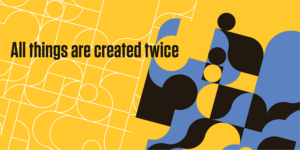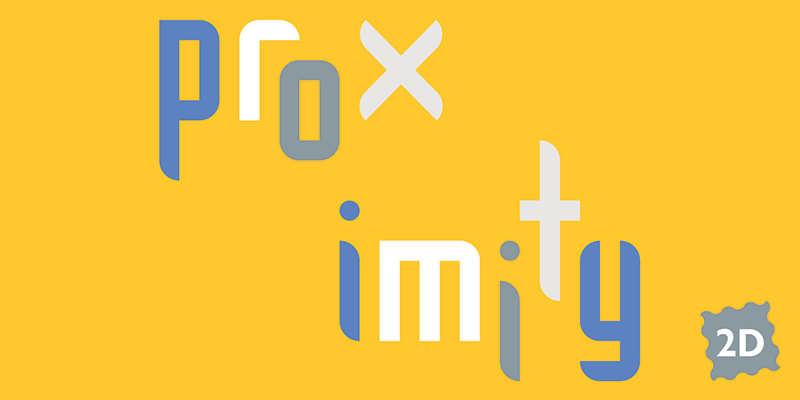Book Review: The Design of Everyday Things by Don Norman
Have you ever been confused by a piece of technology? We know electronics can be complicated, but what about the shower in a hotel room? If you have failed to figure out how something works, you are not dumb. The fault is with the designer! Don Norman is an advocate of user-centered design and has lent his expertise to Apple Computer, Hewlett-Packard, Motorola, and others. His book The Design of Everyday Things is a classic, and a comprehensive introduction to design thinking.
First, understand that every artificial thing is designed. Good design is usually below your awareness because it simply works. Bad design causes frustration, mistakes, financial loss, and even mortal harm.
Norman created a lexicon to help talk about human-centered design. Here are his seven fundamental principles of good design:
Discoverability: The possible actions must be obvious.
Feedback: Tells you the result of your action. If you push the walk button at an intersection, how long do you wait before you press the button again? Without feedback, you have no way of knowing that your input was accepted. According to Norman, feedback must be immediate and informative. “Error message CJ39HYS510XI750” is not informative.
Conceptual Model: Your mental image of what the controls are doing should be consistent and lead to accurate evaluations of results.
Affordance: The possible physical relationships between a physical object and a person. A chair affords sitting. A window affords seeing through a solid wall.
Signifier: “Signifiers communicate where the action should take place.” A horizontal bar across a door is an affordance that invites pushing. The word “push” is a signifier to remove all doubt. Many doors have hardware, or a lack of hardware, that makes it ambiguous to know how to open it. In this case, a signifier is necessary.
Mapping: The relationship between the controls of a thing and the thing itself. In a car, you turn the steering wheel to the right to turn right. In a boat, you move the tiller to the left to turn right. As long as the user has a mental map of how the control works, both are acceptable.
Your stove top probably has four burners, one in each corner. But the controls are in a straight line. How does each knob map to the burner it controls? What about the light switches in your home or office. Do you know intuitively which switch maps to each light? (Probably not!)
Constraints: Physical, logical, and cultural constraints guide people to use the object correctly and prevent misuse. When replacing batteries, they must be placed in the correct orientation. Yet it is possible to place them backwards which could leave the device unable to function, or even damage it. The plus and minus markings might be there, but they are difficult to read. Physical constraints, so that the batteries can only be inserted with the correct polarity, is a great solution.
We Interact with Objects at Many Levels
The way we interact with things is visceral, behavioral, as well as reflective. Great design appeals at the visceral level of harmonious sound, feel, appearance, and sometimes smell. But that is not enough.
At the behavioral level, “every action is associated with an expectation.” When a user knows that certain actions lead to expected results, she feels a sense of control. “Feedback provides reassurance, even when it indicates a negative result.”
At the reflective level is where analytical understanding takes place. A bad experience can lead to frustration, shame, guilt, or blame. If the user tells himself a story that he was too incompetent to use the device, even though the device itself was not well-designed, he will avoid it in the future. A pleasant experience will bring him back.
Good design is usually, but not necessarily logical, which is why none of us was ever able to program our VCRs. The clear, logical steps to do so were conceived by engineers. Many engineers do not take into account human psychology and the fact that even the best of us make errors, especially if we are tired, distracted, or in a hurry. All engineers would benefit from an introduction to human centered design thinking.
The Mindset of a Designer
Norman brings up a mindset that successful designers adopt: that of a scientist. Rather than see your ideas fail, think of them as experiments. Each time you don’t get the desired result you have a learning experience. If you are always right, you are playing it safe. Exploration and creativity are not in safe spaces.
One of the keys to effective design is to make sure you are solving the correct problem. “Engineers and businesspeople are trained to solve problems. Designers are trained to discover the real problem.” This can drive managers crazy, and when you apply design thinking at work you will run into pushback. “Designers resist the temptation to jump immediately to a solution for the stated problem. Instead, they first spend time determining what basic, fundamental (root) issue needs to be addressed.” The process seems to go backwards before it goes forwards. Design thinking requires research and an iterative process that is rarely a straight line to a solution. It can be time-consuming and expensive to do it right.
Norman acknowledges that good design is always in tension with marketing, engineering, and budget concerns. It is worth fighting for. Look at the companies that made excellent design a priority and went on to dominate their market: OXO, Apple Computer, Target, Starbucks, to name a few. Design driven businesses outperform their competitors by market share, loyalty, and stock growth.
Here is some advice for designers: People are not to blame when they don’t understand how to interact with your creation. Provide guidance, and allow them to continue without starting over. When people make errors, they tend to blame themselves. Because of this, they are unlikely to admit the problem. Only by observation will you know with certainty if your object is user-friendly.
Why Are So Many Things Poorly Designed?
In your mind, picture a penny. Is Abe Lincoln facing to the left or the right? You are probably not sure, because you don’t need to know. You use other cues to recognize a penny and differentiate it from a nickel or dime. The Susan B. Anthony dollar is one example of poor design. It immediately become confused with the quarter because it was almost the exact same size and shape. Yet all the U.S. bills are the same size and shape, and they are not confused. It has to do with the distinguishing features we look for—and we ignore everything else.
Why do we encounter so much bad design? One reason is legacy. Why can’t we have batteries that work no matter what direction that are installed? This type of battery exists, but it would require retooling all products that take batteries. And the new batteries would not work in old products. So we live with the problem.
Bad design can lead to mistakes and accidents, sometimes fatal. Usually a chain of events causes an accident, rather than one thing alone. An inquiry is called for, and when it reveals the point of human error, that is the conclusion of the report. More training is recommended. But no matter how well trained a person is, all humans are prone to error. Norman suggests using a Japanese procedure called the “five whys.” Once you have found the proximate cause of an accident, ask why it happened. Then ask why a few more times until you get to the root cause of the problem. According to Norman, “if a system lets you make the error, it is badly designed.” More training does not solve the underlying problem, but a redesign could.
Next time you have a problem with an unfamiliar shower or coffee maker, you can ask yourself at what step the design failed. How would you do better? You will see the world differently with a design mindset.
Humans and Machines
“People are flexible, versatile, and creative. Machines are rigid, precise, and relatively fixed in their operations.” A human–machine collaboration is ideal. Problems arise when we expect human to act like machines, for example doing repetitive tasks or staying alert for long periods of time.
Businesses would do well to avoid the temptation of “featuritis.” Increasing features makes the product more complex and the experience less enjoyable. Norman advises companies to focus on what they do best and advertise those strong points. By adding more and more features, your product becomes one of a herd with nothing left but a race to the bottom on pricing. A simple, elegant design that allows people to do one thing well is the way to stand out.
Norman concludes the book with his dream of the power of individuals unleashing their creativity on problems ripe for radical innovation. He suggests education, transportation, medicine, and housing as needing design thinking. He dreams of “a renaissance of talent, where people are empowered to create, to use their skills and talents.” Design thinking is available to all, if you are willing to observe, imagine, and work hard. Technology is putting the tools of creativity into more hands all the time. Always remember, great design puts people first.
___
If any of this piques your interest, read the book. All of these concepts are delved into more deeply with many amusing case studies.







